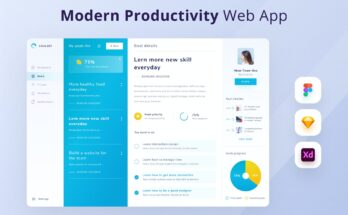With thousands of developers, publishers, authors, designers, production houses and distributors, Microsoft’s Xbox gaming platform is a complex ecosystem of relationships. Collaboration across this ecosystem is key to producing a high-quality product that attracts the best talent and satisfies consumers–but Microsoft recognized points of friction that needed to be addressed.
A multitude of manual processes and siloed systems meant that developers and publishers couldn’t link complex calculations for royalties to the underlying data. As a result, they had to spend time and resources reconciling, validating and recalculating royalties to verify accuracy.
To cut through complexity and increase trust in the data, Microsoft and EY partnered to co-develop the first blockchain-based financial system of records for processing end-to-end royalty transactions, from contract creation through to integration with SAP for payments. The blockchain solution provides near real-time access to trusted transaction data from source systems to game publishers.
The upshot? Publishers can access information on royalties earned in just four minutes instead of 45 days after month end. Royalties administration costs have been slashed. There’s greater visibility of the underlying data. Microsoft benefits from faster, more efficient processes and lower operational costs.
With trust, everything moves more smoothly. Collaboration is easier. Innovation drives value. Technology can be deployed at speed. But getting to this is far from easy.
We are living in a time of increasingly intelligent technologies, when an organization’s ability to be trusted really matters. But the way data and intelligent technologies such as AI are being used is creating significant trust gaps. For example, the public feels that intelligent technology is moving too fast and that regulators can’t keep up, as documented in the 2020 Edelman Trust Barometer.

There are plenty of high-profile examples of data misuse and unintended outcomes from AI usage that have contributed to these gaps. One example was this June when an AI tool to reconstruct pixelated photos turned a photo of Barack Obama into a white man. It became a matter of hot debate in the AI community: was the bias towards creating more photos of white people than people of color the result of incomplete data or indicative of the racial bias baked into AI from non-diverse datasets and development teams?
Trust gaps have reframed the question of “Can tech do this?” into “Should tech do this?” It’s no longer about capabilities. It’s about trust in the intelligence that a business uses, and that customers, markets, regulators and ecosystems rely on. Can companies and government organizations ensure the outcomes of their technologies? Without trust, the ability of an organization to operate and innovate is diminished.
Trust in data and technologies results from action. There are methods and techniques that embed trust into data, systems and business models to create sustained value. At EY, we call this Trusted Intelligence.
Trust has to be designed in from the outset. Trusted Intelligence embeds trust in a tangible way that embraces behaviors, processes, business models and outcomes as data moves through the organization — accelerating transformation and lasting value.
Going back to the Xbox story, we can see how trust was embedded into the intelligence of the business:
- Data from a multitude of manual workflows and unintegrated systems has been replaced with trusted data
- Trusted data is also created by automating complex royalty calculations, product tokenization and onboarding smart contracts using AI based on secure cloud technologies
- Trust is maintained through the blockchain-based system of record that generates invoices and statements with integration to SAP for settlement and processing of payments, as well as post-accounting journals
- And finally, trust is embedded into how people work by applying clear rules and transparent processes
As businesses seek competitive advantage, applying Trusted Intelligence offers a new frontier of opportunities to accelerate digital transformation.
Accelerated transformation
While digital transformation was well underway prior to the pandemic, Covid-19 stepped up the pace. In a recent EY webcast on the impact of Covid-19 with nearly 2000 participants, 82% said they were accelerating digital transformation.
This confirms what we’re experiencing with our clients in the market. We know those achieving radical and exponential value creation are responding to three key drivers:
- The ability to put humans at the center of what they do: when it comes to customers, it’s not “How do we get more customers to buy what we make or do?” but “How do we give customers more of what they want?” This new mindset is backed by engaged, motivated employees.
- Deploying technology at speed: today’s customers and employees demand speed. This means automation through AI and other intelligent technologies, as well as cloud-based services. It means using agile methodologies and technology that helps you respond to dynamic conditions.
- Innovating at scale: organizations need to innovate on two levels – survival today and success tomorrow. Collaboration is the name of the game, for example through ecosystems and alliances. Innovative ideas must be built using large volumes of data, intelligent technologies and cloud infrastructure that are trusted.
Each of these drivers is amplified by Trusted Intelligence. Embedding trust is how organizations can reduce trust gaps and accelerate their digital transformation.
Putting Trusted Intelligence onto your agenda
Trusted Intelligence and value are inextricably linked, and more value builds more trust. There are some fundamental questions that organizations and governments need to address to close trust gaps, take advantage of transformation and earn competitive advantage:
- Do I trust my data, technologies and automated processes?
- Do I trust my ecosystems’ data, technologies and automated processes?
- Does my ecosystem trust my data, technologies and automated processes?
These questions define the strategies, investments and actions of organizations as they reshape their operating models.
Conclusion
As businesses and governments transform to meet new challenges, it’s essential to embed Trusted Intelligence into the core of operations. As the Xbox example shows, intelligent technologies such as blockchain can build trust into the data and the platform, increasing transparency. With trusted data and technologies, a business can move forward with confidence and at speed.
Enterprises powered by trust will be able to deliver on all three transformation drivers: people, technology and innovation. They’ll be able to leapfrog their competitors. To shape new markets. To lead into better futures.
This content was produced by EY. It was not written by MIT Technology Review’s editorial staff.


